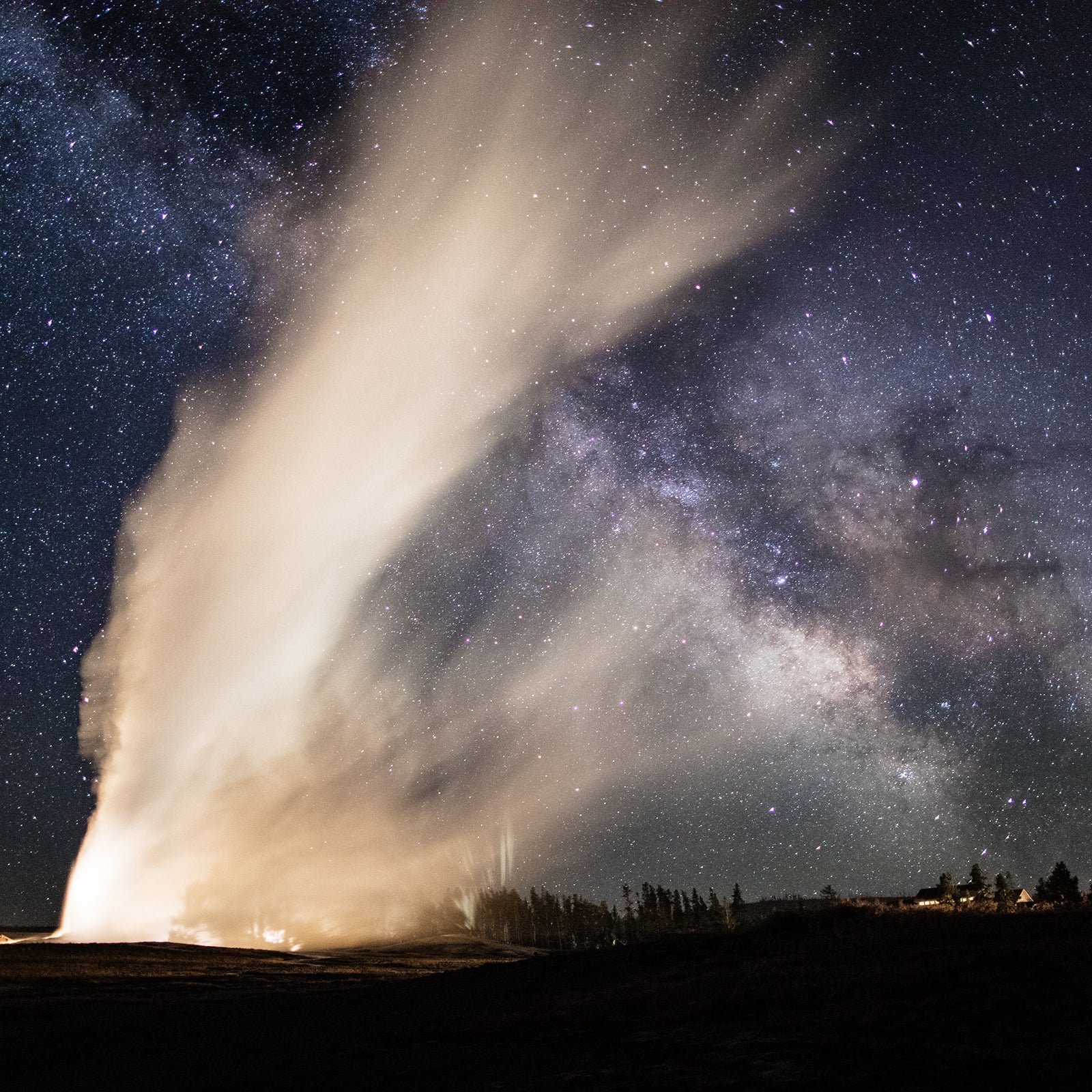“Absolutely American, absolutely democratic, they reflect us at our best rather than our worst,” wrote historian Wallace Stegner of America’s national parks.��National parks are different from other types of public land. Rather than being managed under the principle of multiple use—a system in which resource extraction must be balanced with recreation and ecosystem conservation—these parks are managed for preservation and tourism. Our country’s most spectacular��treasures are protected inside the parks, and public access to them is prioritized.��They allow visitors to see natural��beauty with the aid of educational resources, knowledgeable rangers, actual bathrooms, catered food, and the infrastructure necessary to make your experience��safe and comfortable.
In other words, national parks are��easy to visit��and easy to enjoy, especially for those who may have limited experience outdoors. But��the stuff in them is so neat��that even the most experienced outdoorspeople still relish a trip.
Which National Park Should You Visit?��
The National Park Service manages 20 different types of units, ranging from historic battlefields to paved parkways. For the purposes of this article, let’s talk about those that include “national park”��in their title. From Acadia in Maine to Zion��in Utah, these are the 62 parks��known worldwide, often because they are utterly unique.
Each one has something different to offer.��If you really want to see alligators, head to Everglades National Park��in Florida. If you’re after��wolves, go to Yellowstone��in Wyoming. If you don’t want to drive a long distance, just aim for��the one closest to you. All of the national parks are really freaking cool.
If your park of choice isn’t immediately obvious,����features��a variety of tools, from maps to an activity sorter,��to help you decide. There��you can easily compare available activities, amenities, and attractions.
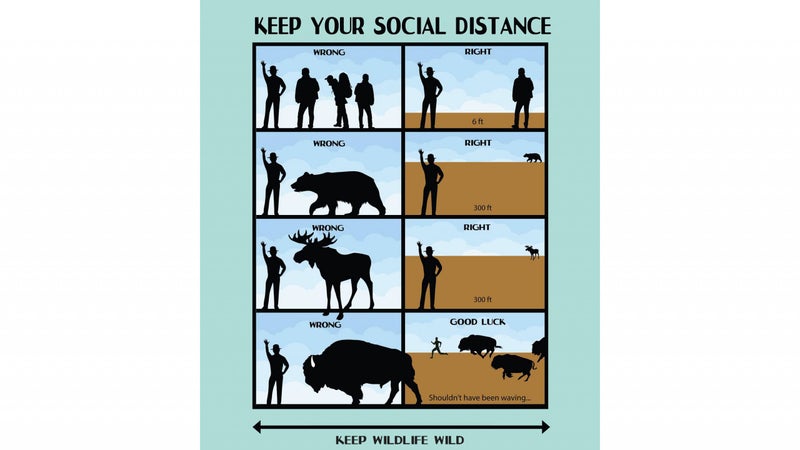
What Should You Expect?
The conflicting needs of ecosystem preservation and lots of human visitation make one thing inevitable at park units: rules. The National Park Service is able to manage its largely unspoiled nature by heavily managing those visitors.
Take Yellowstone, for instance. Getting the chance to see herds of bison in their native environment, free of fences or cages, is amazing. But��if you approach one too closely, you risk not only your life��but that of the bison. Animals that become too comfortable with humans, or who learn to associate people with food, become a threat��that must be eliminated. That’s why��you’re asked to stay at least 25 yards away from them��and to avoid touching or feeding��any animal.
Such rules,��or the ones��that require you to remain on boardwalks surrounding geysers or away from cliff edges, don’t just protect your life��but also allow these unique experiences to remain available to everyone.
You should also expect to share the national parks with other people. Road-accessible front-country areas will be crowded.��Speed limits are low, and traffic is heavy. Parking can be difficult to come by. Give yourself��extra time, rely on shuttle systems when possible, be patient with fellow visitors, and enjoy��the shared experience.
Not everything in the national parks is easily accessible; most contain vast tracts of unspoiled wilderness, in addition to the big tourist attractions. To keep these areas wild, human access is often limited. Permits to enter��these areas often book up far in advance, although some sites may reserve a limited number of permits��for walk-up, day-of use. Details on permits��are available on the website for each park.
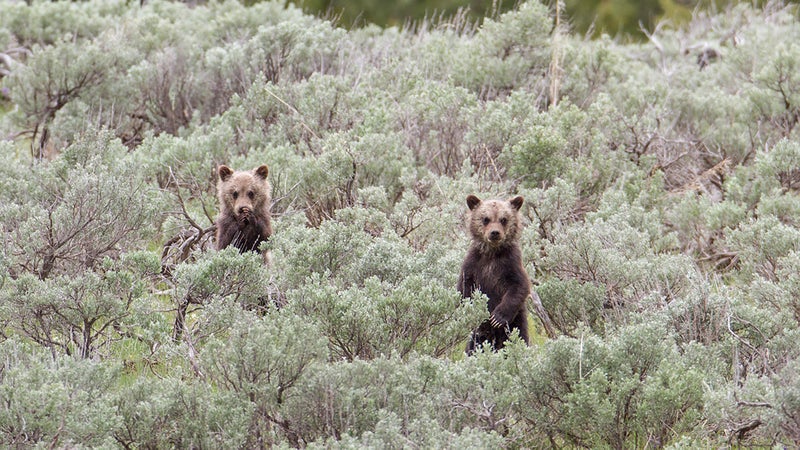
How Do You Find the Good Stuff?
Here are��two things that will make every national-park visit more successful: research��and waking up early.
Even as parks begin��to reopen��amid the coronavirus pandemic, certain facilities, sites, and attractions are subject to closures. These can be seasonal, due to maintenance, or to prevent overcrowding. Avoid disappointment by visiting park websites to ensure that��the things��you want to see, or the resources you need, are open and operating normally.
If everything is running as it should, you’ll still have a much better experience if you get to your destination as early in the day as possible. Beating the crowds means easier parking, shorter walking distances, fewer��packed walkways, more access to rangers and other staff, and better odds of seeing animals, which tend to be out in the open mostly at dawn and dusk. In the summer months, you’ll also enjoy��cooler temperatures in the morning.
Beyond park websites, there are numerous other resources you can��use to plan your trip. , travel websites, and����can all help you identify stuff that you want��to see. The National Park Service has�� for 25 sites, while the ($20) provides GPS-based guided audio tours for many of the most popular parks.��Just remember that you can’t count on reliable cell-phone service, so download what you’ll need before you go.
While apps and Instagram are great, anytime you’re visiting a national park for the first time,��stop and talk to the park rangers. They’re there to ensure��you have the best time possible, and they offer��a wealth of knowledge. You’ll usually spot��them around popular attractions��or at the signposted offices. When in doubt, ask where you can find one��at the entrance gate.
Consider taking a guided��tour. You’ll find a list of approved tour��operators on the website for each park. These operators coordinate��everything from afternoon strolls to multi-day backcountry adventures;��often rent any equipment you may need, from a bicycle��to a boat to climbing gear;��and can pair you up with informed, conscious��guides. Booking a tour will also likely resolve any issues related to permits and reservations, as guide companies hold blocks of both. remains one of the coolest outdoor experiences of my life.
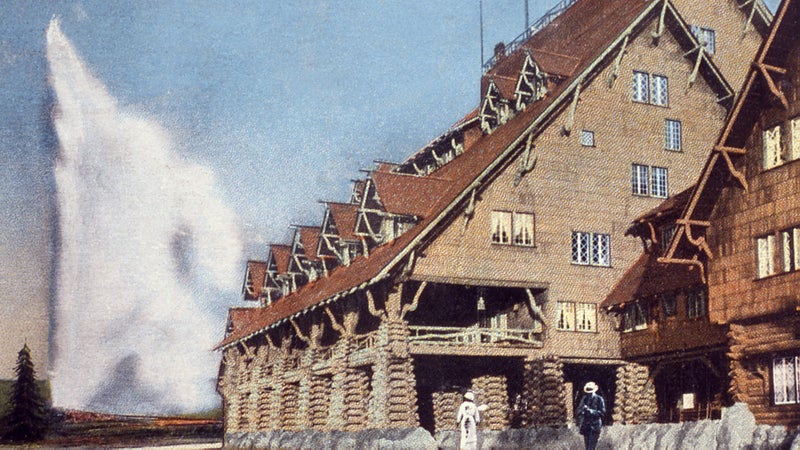
Where Should You Stay?
Whether you’re camping or staying��at��a hotel, you should definitely book in advance. Campground and lodge costs are not included in��park entrance fees.
Many national parks are home to both campgrounds and lodges within their borders. Camping offers the traditional outdoor experience, but check any restrictions and amenities when you book. For example,��some may be more dog-friendly than others. Some may or may not allow campfires in the provided metal fire rings (and if fires are allowed, you’ll typically need to bring your own wood, which you should purchase locally to avoid spreading invasive species).��Toilet facilities vary��but will typically be simple pit designs. Running water, if available, will come from a pump. Don’t expect sinks or mirrors.
Book campsites in the national parks through . Most sites have��volunteer hosts living on-site who will help you find your spot��and can often provide local tips and information.
The various lodges in different parks��afford��all the comfort and amenities of hotels, complete with bars, restaurants, and real bathrooms (mirrors included). Just note��that��these facilities tend to be historic in nature��and, despite their��prices, luxuries are limited or nonexistent as a result.
Even though they’re inside park boundaries, lodges, restaurants, and other commercial services are operated by third-party��vendors, so any available information is found on��a hodgepodge of websites, including��.
You can also typically find a variety of hotels, motels, lodges, and commercial campgrounds outside popular park entrances. These usually don’t��book up as early as options inside the park��and appeal to a wider variety of budgets. ��and are��good resources��for finding accommodations near park boundaries.
Want a truly primitive camping experience��or��to camp without booking ahead of time? Both options are generally possible, as most national parks are surrounded by national forests or BLM land.��Here’s my guide to camping on those.
What Do You Need to Bring?��
If you plan to camp, then you’ll need basic car-camping gear. You can find a walk-through��of those items here.
If you’re driving into a park,��show up with a full tank of gas. Traffic jams are common, and gas stations may not be readily��available.
You’ll also need clothing appropriate for the seasonal conditions typically experienced in any park. Even if you’re visiting in the summer, be sure to pack��thin wool socks, a warm midlayer, and a rainjacket, at a minimum. And always wear comfortable shoes. Clothing you usually hike in is perfect.
Bring more water than you think you’ll need, and make sure you��drink plenty of it.
If you hope to see wildlife, you’ll want some sort of optics. A basic pair of binoculars is considered a��requirement in my book. A spotting scope will offer dramatically better views. Both are available to rent outside popular park units, and��you will regret not taking advantage of this. If you’re excited about the prospect of��snapping decent wildlife photos, pick up a , which allows you to attach your smartphone to binoculars or a spotting scope.
Even if you’re going to eat at park restaurants, remember that travel times inside the parks��can be long. Bring a cooler full of cold drinks, sandwiches, and snacks.
Always carry a paper map. If you intend to leave developed areas, add a compass to the list. Download the area surrounding the park and the park itself��for offline use on Google Maps before your visit. Make sure you have an appropriate charging cable for that phone, and pack an auxiliary battery that you can carry with you.
Headlamps are a good idea, even if you don’t plan to travel at night. You never know when you might make a wrong turn.
Prepare to poop. You’ll find flush toilets and running water at many visitor centers, but toilet facilities at parking lots and campgrounds tend to be primitive. Bringing your own toilet paper is always a good idea, and we should all be carrying plenty of hand sanitizer right now. Baby wipes are a good comfort upgrade��but cannot be thrown in primitive toilets after use, so you’ll need to tote��a sealable plastic bag of some kind to��pack them out. Speaking of primitive toilets, the ones��you find within the��national parks are designed to vent odors out through tall external ventilation tubes. Closing the lid after use is how you keep the toilets smelling reasonable for the next visitor.
Bring heavy-duty��trash bags, and pack out all of your trash��(and any you may find left by others).
Most important��is a positive attitude. National parks belong to all of us. The popular mantra is: leave nothing but footprints, take nothing but memories. Enjoy these public lands for the incredibly special places they are, and relish��the experiences they offer. Our country has��plenty of other outdoor spaces for party camping and activities��that may be fun but��disrupt wildlife or disturb people—look for those��elsewhere.
Some national parks allow leashed dogs into developed front-country��areas. I’m the biggest dog-camping enthusiast you’ll meet, and even I don’t feel national parks are an appropriate place to bring pets. They’ll be challenging to manage if you need to park your car for any period of time in warm weather, they’ll be at risk from��wildlife, and by having them along, you might��annoy��people at crowded campgrounds and other facilities. Do yourself a favor and board Fido during your trip.
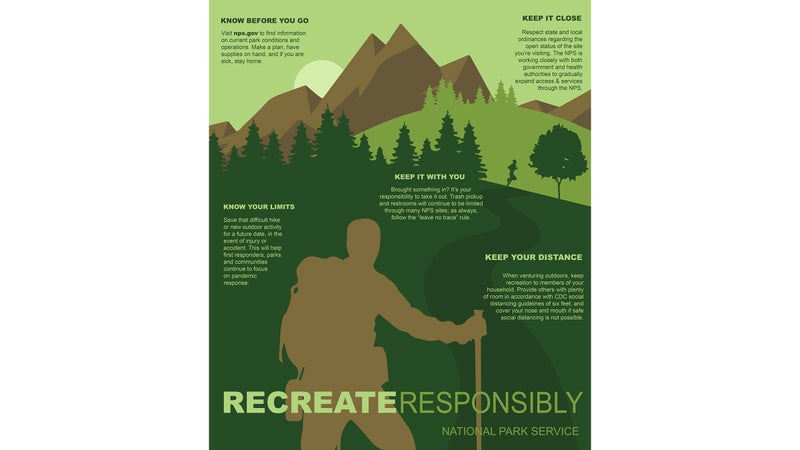
Visiting National Parks During the Pandemic
Emily Pennington, who originally set out to visit every national park this year,��put together a helpful guide on what changes to expect��and how to stay safe on your parks trips.
To that��I’d add:��we’re all in this together. Infections will fall��and our economy will recover fastest if we all follow the��Centers for Disease Control and Prevention guidelines��and try to minimize both our own risk of infection��and the risk��of spreading COVID-19. Remember that it can be spread by asymptomatic carriers, that our nation lacks the testing necessary to identify those carriers, and that the remote rural communities in and around parks are uniquely susceptible to the disease. Wash your hands, disinfect surfaces, and wear a mask if you’re around other people. Camping is great social distancing, but if you’re traveling between regions, you’re still at risk of contracting or spreading��the coronavirus.


